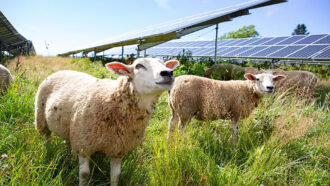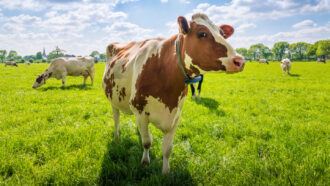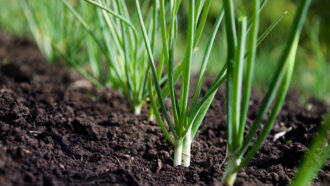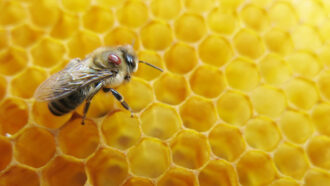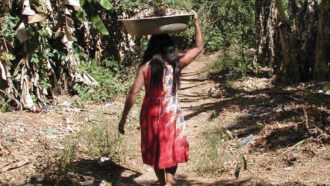Crops are being engineered to thrive in our changing climate
While feeding us, farms of the future also may draw climate-warming carbon out of the air
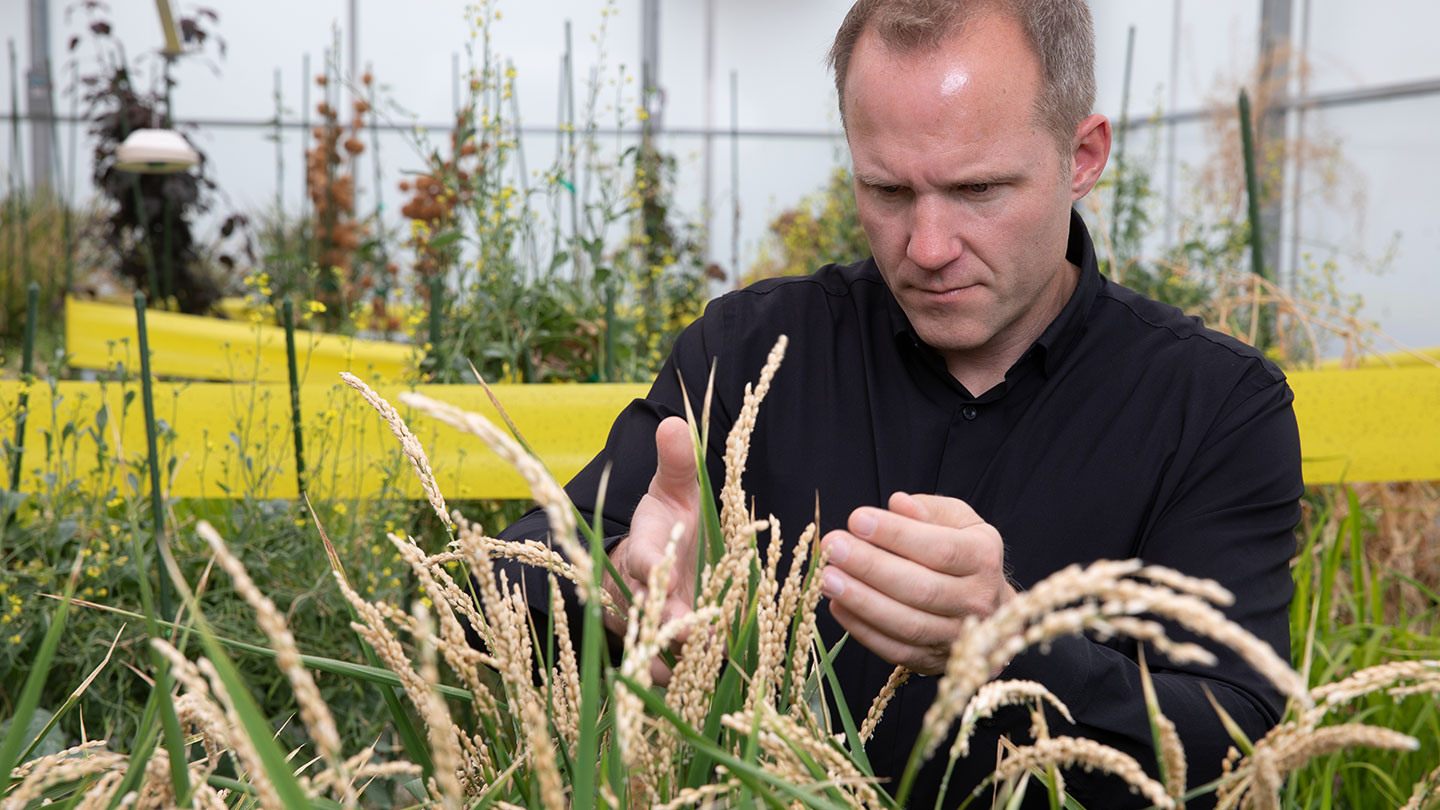
Today’s farms don’t capture as much carbon as they could. Wolfgang Busch (shown here) is among scientists looking to change that. Farms of the future may be able to actively help fight climate change.
Salk Institute
Listen to this story:
Have feedback on the audio version of this story? Let us know!
This is another in our series of stories identifying new technologies and actions that can slow climate change, reduce its impacts or help communities cope with a rapidly changing world.
Sohabati Devi grows rice and vegetables in the village of Dodhghat. It’s in Uttar Pradesh, India. One August night in 2017, disaster struck. Floods drowned her fields and those of many of her neighbors. “This kind of flooding had never been experienced for at least the last two decades,” Devi told the International Rice Research Institute. She worried her crops were ruined.
Around the world, floods, droughts, heat waves and other weather extremes are getting worse — and more common. New diseases and pests are threatening crops, too. This not only endangers the livelihoods of farmers, like Devi, but also could lead to global food shortages. The main culprit: climate change. People have been pumping too much carbon dioxide and other greenhouse gases into the air.
Thankfully, Devi’s story has a hopeful ending.
She lost a lot of vegetables. But she had planted a special type of rice. Scientists had tweaked its DNA to contain a specific bit of genetic material called SUB1A. This gene helps rice plants survive being completely submerged for up to two weeks. Indeed, after the flood subsided, roughly half of Devi’s rice crop was still alive.
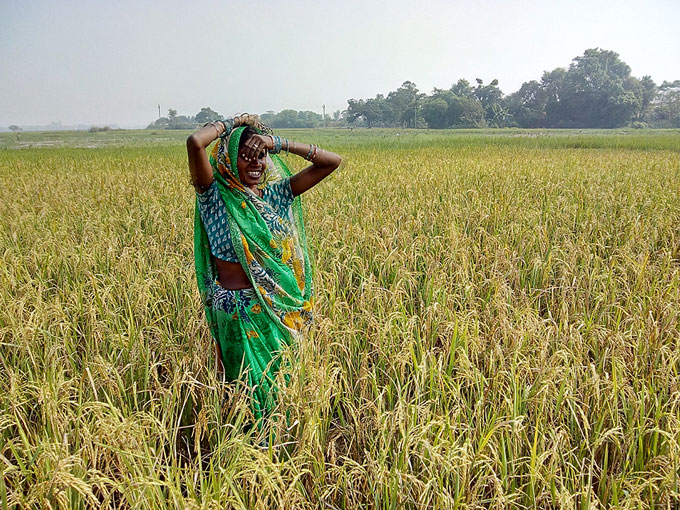
She called it “an astounding miracle.”
To withstand the effects of climate change, the world needs many more successes like this one. Genetic upgrades, such as this Sub1 rice, can help if they let plants survive diseases and bad weather. But some scientists don’t just want to help crops survive climate change. They’re looking to develop crops that actively fight climate change.
“Plants are the best carbon-capturing machines on Earth,” says Wolfgang Busch. He’s a plant biologist at the Salk Institute in San Diego, Calif. Trees, other land plants and soils already absorb around 30 percent of the carbon dioxide, or CO2, that people release into the air each year. What if plants captured even more?
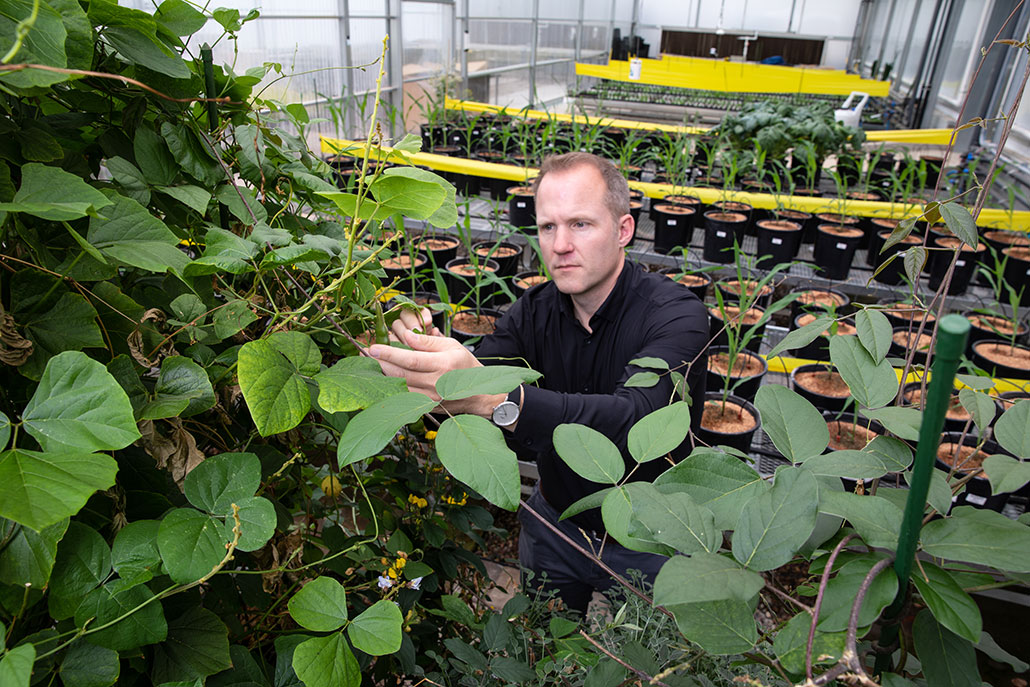
“We are going to try to engineer the crops so that they channel carbon into the soil,” says chemist Brad Ringeisen. He directs the Innovative Genomics Institute at the University of California, Berkeley.
Turning crops into carbon-sucking superheroes is a complex process. Some researchers are working to help plants draw more CO2 out of the air. Others are studying plant roots and soil microbes in their search for how to make plants stick more carbon underground — and for longer.
Much of this research is still in its early stages. But if scientists succeed, farms such as Devi’s may someday help reduce the harms of climate change — and make it easier to keep feeding the world.
Building better leaves
During photosynthesis, plants convert energy from sunlight into chemical energy. Plants use this energy to turn CO2 from the air into the carbon-rich sugars and oxygen they need to grow. Plants also send carbon into the soil through their roots.
If this greenery could ramp up its photosynthesis, it could capture more CO2 from the air. Luckily, there’s lots of room to improve plants’ photosynthetic powers.
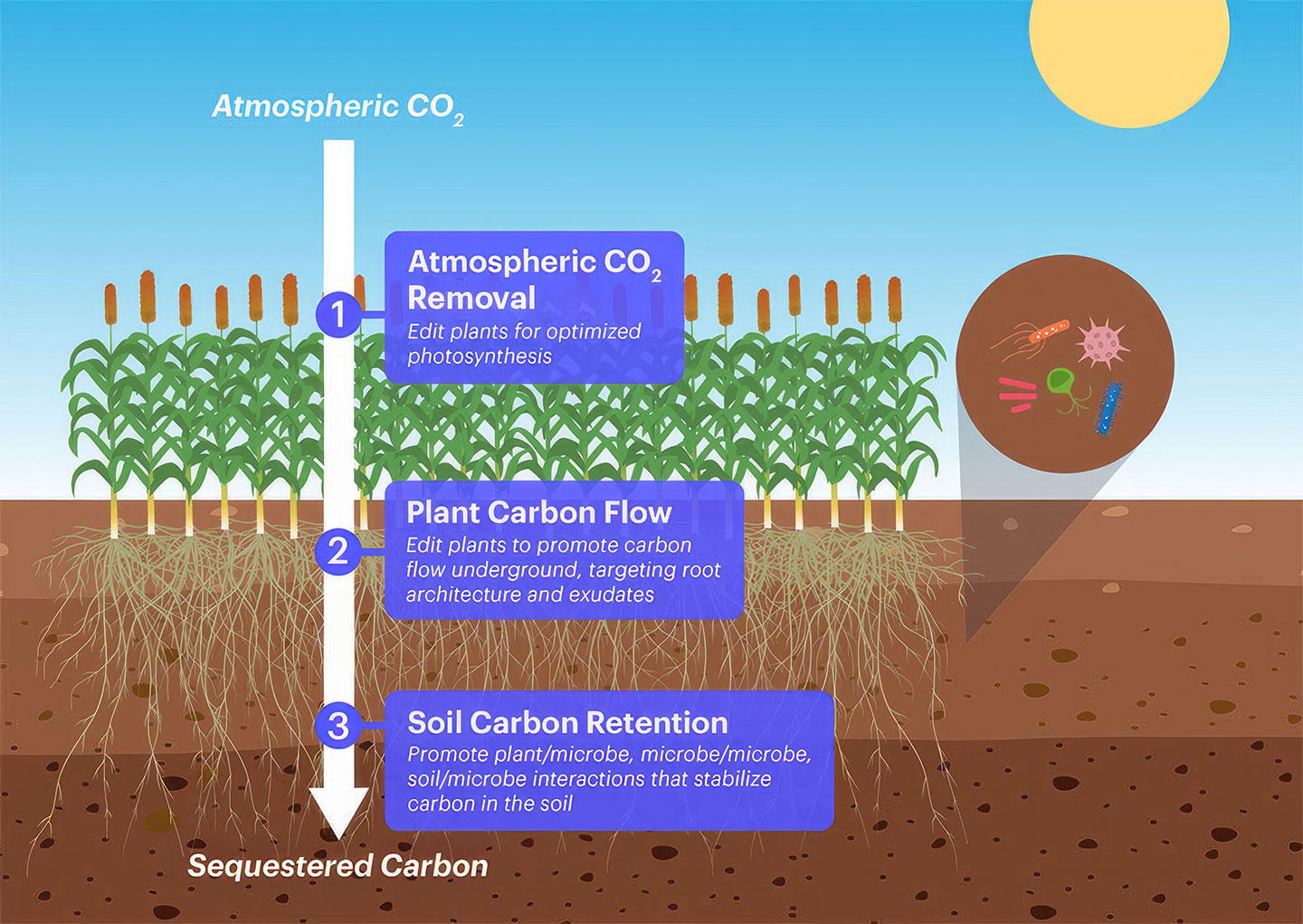
Plants “can’t actually use all the sunlight when full sun is shining on the leaves,” notes Krishna Niyogi. He’s a plant biologist at UC Berkeley. In fact, too much sunlight can damage plant cells. To guard against this, plants have something like a safety valve. In full sun, it kicks on and vents sunlight as heat. In the end, only around 3 percent of the sunlight that a leaf absorbs ends up powering photosynthesis.
The safety valve stays open for seconds to minutes, Niyogi explains. In some cases, it may stay open for as long as half an hour, even after shade returns. On many modern farms, plants grow so close together that the leaves overlap a lot. They experience rapidly changing patches of sun and shade. If leaves’ “safety valves” could respond to changing light faster, then plants could capture sun energy they are currently missing, he says.
Three proteins control the opening and closing of those safety valves. Boosting the levels of these proteins could speed up a plant’s response to changing light.
In one 2016 study, Niyogi worked with Stephen Long at the University of Illinois Urbana-Champaign on a project called RIPE. That’s short for “realizing increased photosynthetic efficiency.” To boost these proteins, the team added three genes into tobacco plants. (In the plant world, tobacco is like a lab rat. Scientists often use it to test their ideas.)
The result? Plants grew 14 to 20 percent larger than usual. This is important, because larger plants store more carbon in their tissues.
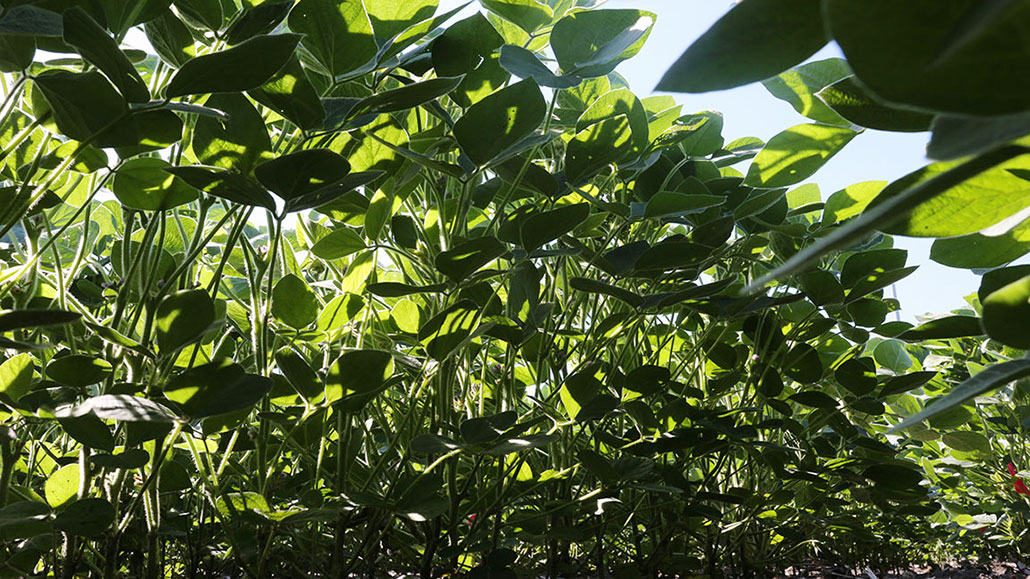
This approach works in soybean plants, too, the team reported last year.
For those studies, Niyogi’s group used genes from the weed Arabidopsis thaliana (another lab rat of the plant world). Now, the group is trying to edit a plant’s own genes directly to make the same types of changes. Why? Some people may be more likely to accept genetically tweaked crops if they contain only genes from their own species.
Niyogi reports his team has had some success working with rice (but it’s not yet published).

Inspired by pond scum
Capturing energy from sunlight is the first stage of photosynthesis. Tweaks to other parts of the process might also increase how much CO2 plants capture.
Some researchers have found inspiration in a type of pond scum. Technically, the scum is known as cyanobacteria (Sy-AN-oh-bak-TEER-ee-uh). This microbe does a much better job than land plants at pulling into its cells the CO2 in air. It’s also better at turning that CO2 into sugars. It uses a special protein called rubisco.
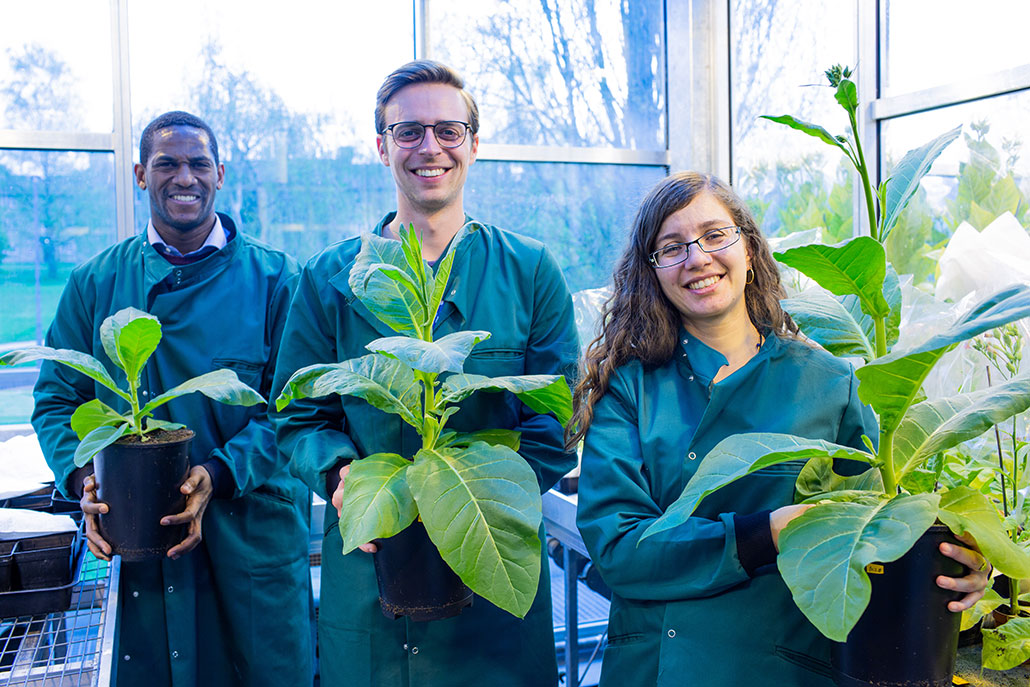
Patricia López-Calcagno has tested what happens when you edit two parts of photosynthesis at once. A plant biologist, she now works at Newcastle University in England. In 2017, she was working at the University of Essex on a collaboration with the RIPE project. Her team extracted genes from other organisms. One gene came from cyanobacteria. It improves the conversion of CO2 into sugars. And a gene from red algae helps capture a lot of light.
The RIPE team put both these genes into tobacco plants. In a test in a field, these plants grew 27 percent larger than normal, the team reported in 2020. Surprisingly, the genetically altered tobacco plants also handled variable water conditions better than normal.
“When there wasn’t a lot of water, they were still able to have increased growth over a typical plant. And then, when there was a lot of water, they had even better, increased growth,” reports López-Calcagno. That bodes well for a future with floods and droughts due to climate change.
Deeper, denser roots
Encouraging photosynthesis to pull more CO2 from the air is a great start toward helping farms fight climate change. But this removal is short-term. When a plant dies, microbes in the soil chow down on it. Those microbes then belch out CO2 and other greenhouse gases, which return to the air.
The deeper plant roots grow into the soil, though, the longer it takes that carbon to make its way back out again.

“The roots are the vehicle to actually store the carbon and take it out of the atmosphere,” says Busch. He’s the proud owner of what may be the world’s largest collection of root pictures and videos. “We have taken,” he says, “millions of root pictures.”
Most of these feature the roots of the lab-rat weed A. thaliana. Busch’s movies reveal how its roots grow when some of the genes in this plant differ. Most of these plants are natural varieties collected from all over the world. A few have been genetically engineered.
One goal of this survey work is to find genes that make plants grow deeper roots. Another is to find genes that lead to bigger root systems, since those contain more carbon. Finally, Busch hopes to find genes for roots that hand less carbon over to hungry microbes and fungi that will belch out greenhouse gases.
One root material that holds onto its carbon especially well is called suberin, Busch finds. It’s the same substance that makes up cork. Plants with genes that build more of their roots from this material could be better for long-term carbon storage.
From root surveys and other studies, Busch’s team has identified around 50 genes that seem to help plants grow deeper, bigger, sturdier roots. One gene makes A. thaliana grow roots that reach twice as deep as normal. The researchers are now testing whether these genes lead to similarly impressive roots in soybeans, rice, wheat, corn and other crops grown in a greenhouse.
Shovelomics
Studying roots that grow underground isn’t easy! Plant scientists use the name “shovelomics” to refer to the hard work of digging up root systems so they can be studied. Here, Wolfgang Busch’s team is in Chile to dig up soybean roots for study.
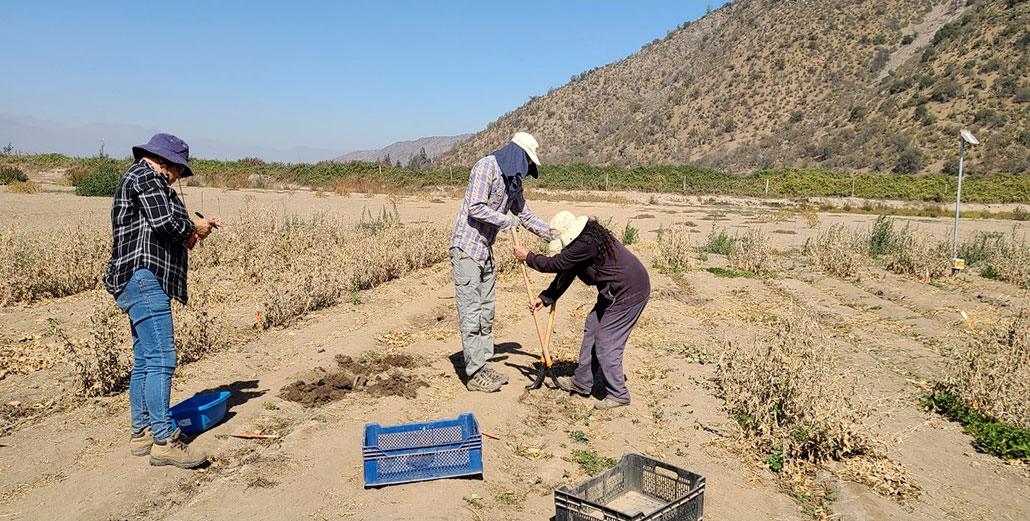
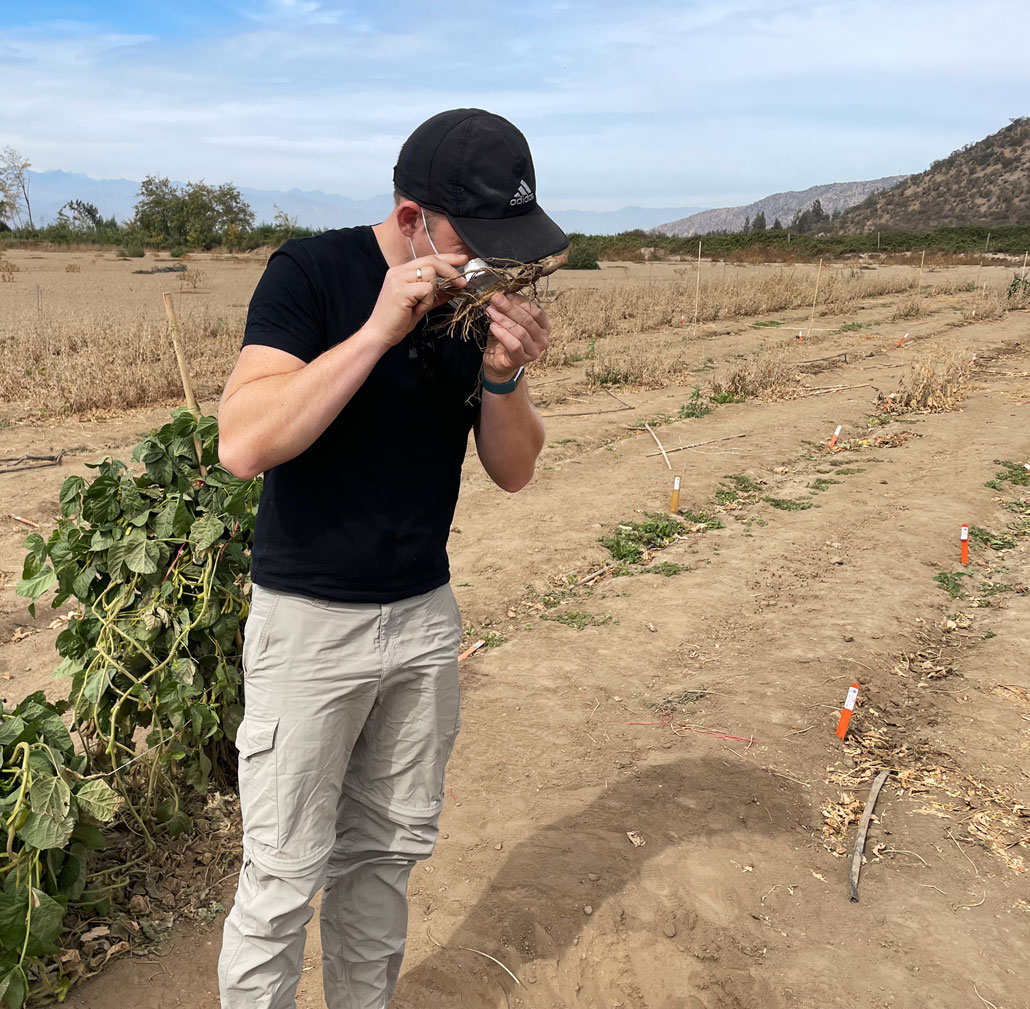
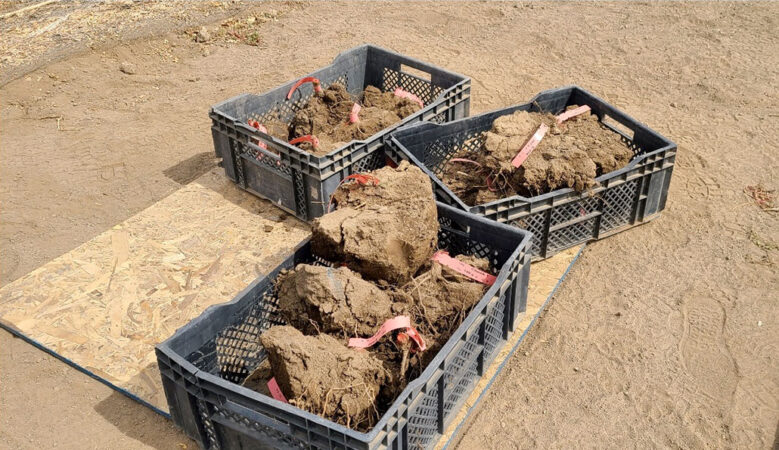
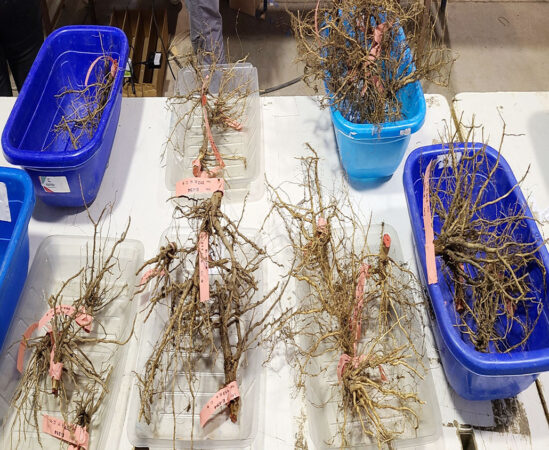
Itty-bitty allies
Pamela Ronald is also working to develop roots that store more carbon. She’s a plant geneticist and rice expert at the University of California, Davis. As a member of the Innovative Genomics Institute, Ronald does work that involves “mutating” rice plants.
In nature, animals and plants regularly experience random changes to their genes. These are known as mutations. When these improve something’s ability to survive, mutations fuel evolution. Some geneticists trigger genes to mutate on purpose. It can speed their hunt for potentially useful changes. The “mutants” they create aren’t scary or harmful — just a trove of genetic variety.
Ronald has grown a huge number of mutated rice plants. How many? “Oh my gosh,” she says. “We have 3,200 mutants.” And for each type of mutant rice, her team grew hundreds of plants. Busch’s lab is helping to take videos of their plants’ roots as they grow.
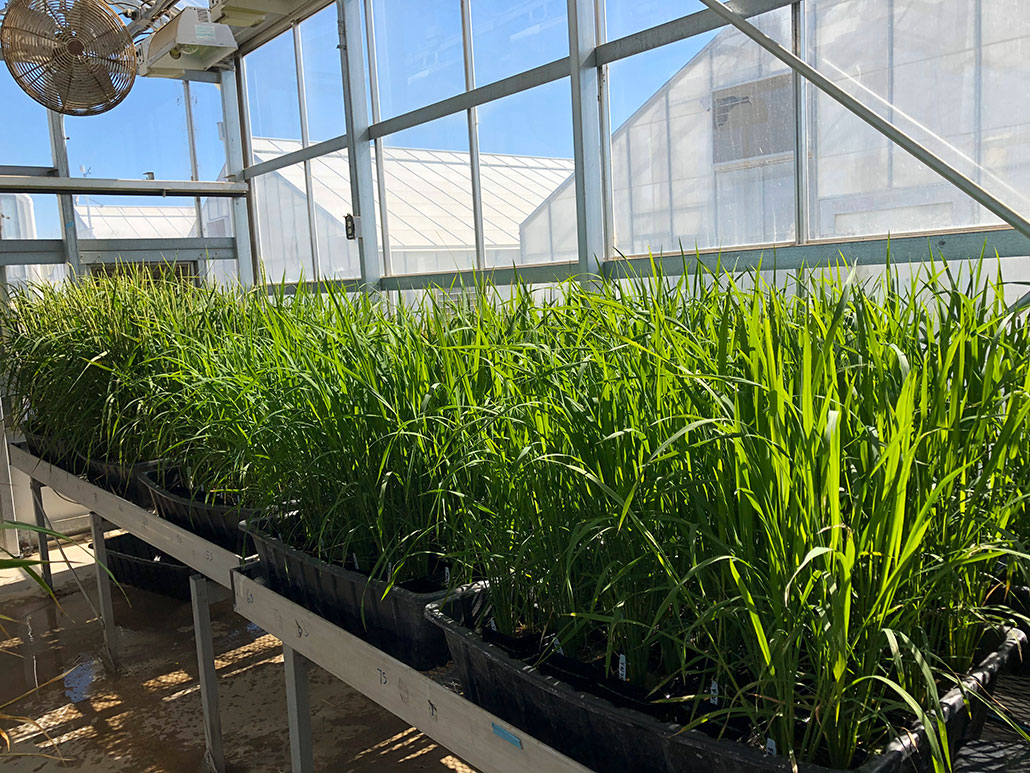
Like Busch, Ronald is hoping to find deeper, bigger root systems among these mutants. That could point out which genes are key for growing carbon-storing roots.
But Ronald’s team is also looking at the soil microbes that show up along the roots. Different roots attract different microbes, she explains. Researchers are still learning which microbes these are and what they do.
For example, many bacteria ooze a sticky substance that may trap carbon in minerals. This might keep that carbon in the soil for many years. Some fungi also help store carbon underground. Other microbes may release carbon quickly back into the air. The team plans to identify helpful soil organisms and ultimately engineer plants to attract them.
Developing plant roots that attract helpful allies or that grow deeper, larger and with more suberin “could help store more carbon for longer in the soil,” says Busch. In terms of climate, he says, “You could have a tremendous impact.”
Farms of the future
Traditionally, farming has worsened climate change. That’s because clearing forests or tilling land for fields releases a lot of the soil’s carbon into the air. Plus, crop fertilizers feed lots of soil microbes that spew greenhouse gases. So if crops could be turned into tools to help fight climate change, that would be a major shift.
“If we could actually flip the script and put chunks of that carbon back into the ground,” says Ringeisen, “that would be amazing.”
Getting many farmers to plant crops designed to fight climate change may be even easier than getting lots of people to adapt to climate change in other ways, such as buying electric cars or building wind farms. Here, all it takes is getting the new seeds out to farmers.
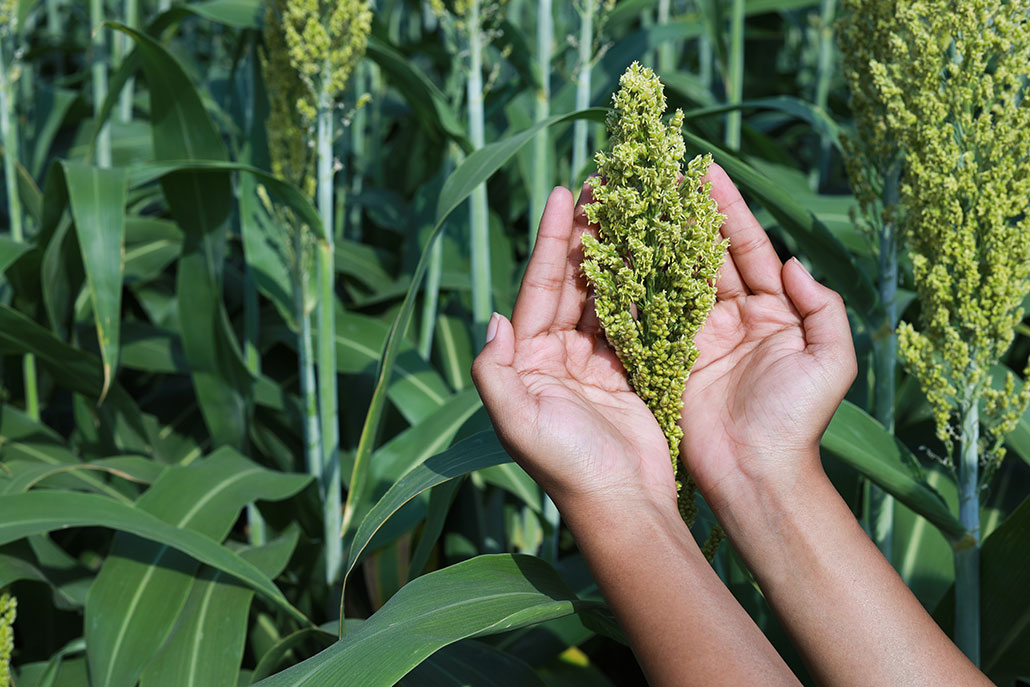
Swati Nayak does this every day. She is a scientist with the International Rice Research Institute in New Delhi, India.
Nayak is persuading farmers and seed sellers to try out new varieties of rice. Some, like Sub1, resist floods or other types of extreme weather. Others fight off common diseases. Some contain bonus nutrients.
The new seeds often are available at little extra cost. Once farmers see benefits, a new variety can become popular very quickly, she says.
It took 15 years to develop Sub1 rice. That’s how long it was between when scientists discovered a genetic tweak that could help rice survive floods and when farmers could buy this rice. But thanks to a new gene-editing technology, scientists can now do such work faster.
It may take only three to four years to bring new crops that fight climate change into field tests at the Innovative Genomics Institute, Ringeisen estimates. The researchers could begin more widespread testing six or seven years later.
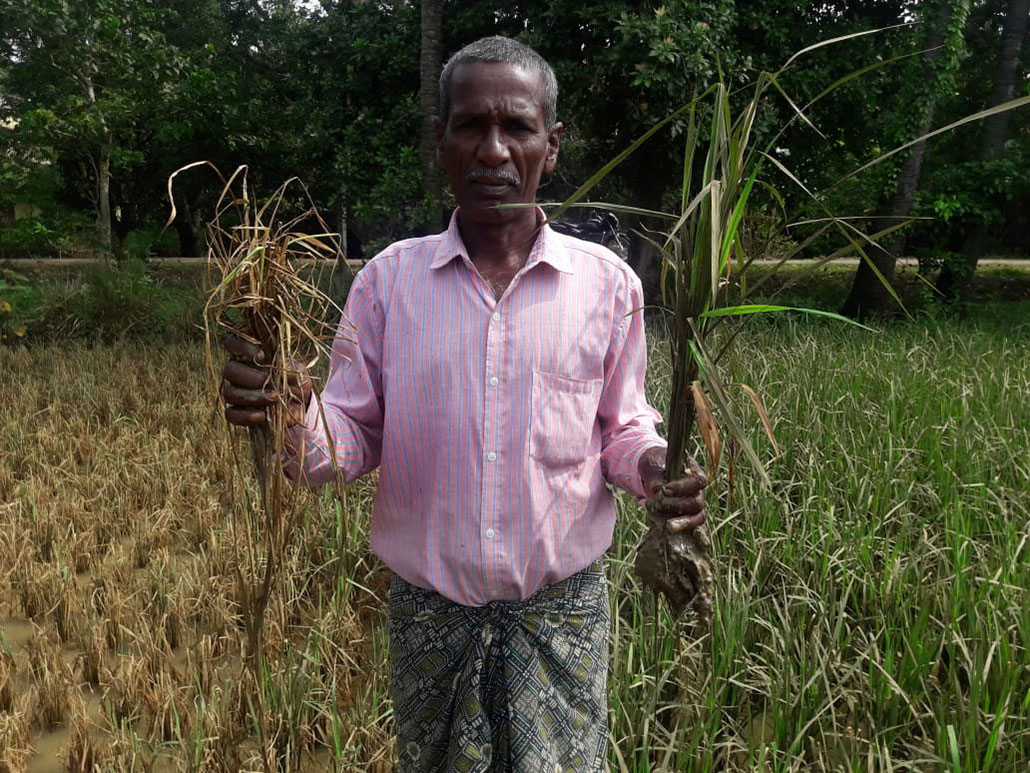
RIPE is planning to have its enhanced crops ready in five to 10 years, says Niyogi.
Farmers will want to see that these new crops produce a lot of high-quality grains or fruits. To achieve widespread use, such plants also will need to hold up well against extreme weather, pests and disease. The good news is that sucking more carbon out of the air tends to lead to larger, healthier plants — and healthier soils.
“We need something like this,” says Nayak. She’s looking forward to bringing better plants to farmers in the villages that she works with. Farmers like Sohabati Devi. Nayak wants to see the happiness on their faces.

